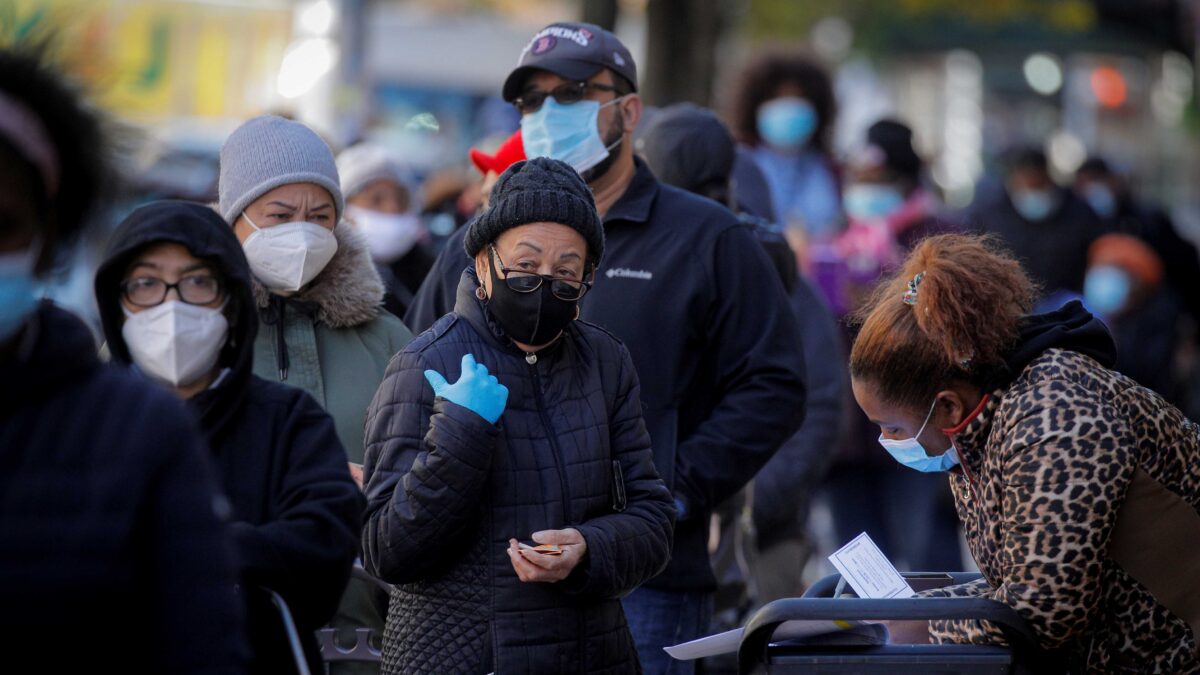


Hunger rates in the United States have risen over the past year following the end of the COVID-19 pandemic and a period of high inflation.
More than 26.5 million Americans reported they had “sometimes not enough to eat” or “often not enough to eat” in the past seven days, according to a June 28 Household Pulse Survey report from the U.S. Census Bureau conducted from June 7 to 19.
The number of hungry Americans in June is up 4.33 percent from last month’s survey and 11.8 percent from the June 2022 survey. Over 10.9 million Americans reported picking up free groceries in the June 2023 report. Even though it is down from 12.2 million in May 2023, it’s still elevated compared to 8.9 million in June 2022.
Rising hunger rates coincided with falling government pandemic aid as well as elevated inflation rates.
During the COVID-19 pandemic, the government instituted multiple measures to ensure poor Americans have access to cheap or free food, including a nationwide waiver that temporarily allowed free meals at schools, and the Supplemental Nutrition Assistance Program (SNAP).
The end of such benefits means that poor Americans now have to pay out of their own pockets for food. Meanwhile, inflation has pushed up food prices over the past year, dealing a second blow to food budgets.
According to data from the Bureau of Labor Statistics, annualized food inflation has consistently remained above 6 percent for every single month since November 2021. When Biden became president in January 2021, food inflation was at only 3.8 percent.
According to a June survey by Propel, which offers financial services to low-income individuals, over 30 percent of respondents had to rely on family or friends to buy food in June—with nearly half of the surveyed individuals saying they cannot afford the kind of food they want.
“The share of surveyed users who ate less and visited food pantries in June remains significantly higher than before emergency SNAP allotments expired, at about 50 percent and 30 percent, respectively,” said the survey, which was conducted between June 1 and 14.
More than 30 percent skipped meals during the previous 30 days of the survey. Many households were also forced to choose between food and paying their bills, thereby falling behind on rent and utility payments.
“We’ve had almost no money for food. My children eat at their grandparents’ house and I try to eat at work since I work at a restaurant. I rely on taking mistake orders home from work to feed my kids,” said Beverly, a parent from Georgia, who was cited in the survey.
Based on a September 2022 report by the U.S. Department of Agriculture (pdf), 89.8 percent of U.S. households were “food secure” in 2021, with the remaining 10.2 percent (13.5 million households) deemed to be “food insecure.”
“The typical (median) food-secure household spent 16 percent more for food than the typical food-insecure household of the same size and composition,” it said.
One of the aspects that the U.S. Environmental Protection Agency’s (EPA’s) “Food Recovery Hierarchy” focuses on is feeding hungry people by donating excess food to soup kitchens, food banks, and shelters.
The EPA estimates that food retail, food service, and the residential sectors generated around 66 million tons of wasted food in the country in 2019. The agency pointed out that “in many cases, the food tossed into our nation’s landfills is wholesome, edible food.”
“We can be leaders in our communities by collecting unspoiled, healthy food and donating it to our neighbors in need. By donating food, we’re feeding people, not landfills, supporting local communities, and saving all the resources that went into producing that food from going to waste.”
Companies that donate food may also benefit from tax incentives. The EPA lists the resources people can use to find soup kitchens, food banks, pantries, and shelters that may be interested in accepting food donations.
